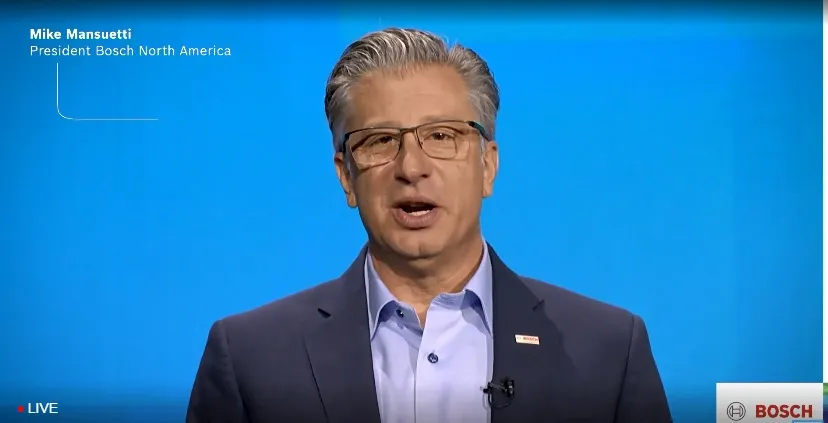According to Dr Peter Harrop of research company IDTechEx, there is still no agreement on the best type of electric motor to use in heavy trucks.
The company’s analysis indicates that the booming, confusing traction motor business will rise to around US$400 billion in 2027. Its new report, Electric Motors for Electric Vehicles 2017-2027 navigates the jargon, the design options and the disagreements. The changing needs and evolving technology are matched to create forecasts and technology timelines based
December 19, 2016
Read time: 4 mins
According to Dr Peter Harrop of research company 6582 IDTechEx, there is still no agreement on the best type of electric motor to use in heavy trucks.
The company’s analysis indicates that the booming, confusing traction motor business will rise to around US$400 billion in 2027. Its new report, Electric Motors for Electric Vehicles 2017-2027 navigates the jargon, the design options and the disagreements. The changing needs and evolving technology are matched to create forecasts and technology timelines based on intensive recent travel and interviews by PhD level analysts.
Rotating electric machines (REM) propel electric vehicles at least some all of the time by land, water and air. In a hybrid the motor may sometimes have to run hotter due to hot engine systems nearby and tougher duty cycles. This affects motor design as do cost-performance compromises for the very different duty cycles and environments experienced by vehicles land, water and air. Off-road vehicle REMs are very different from on-road. The second most expensive part of an EV after the energy storage is typically the REM system including its intimately related motor controller.
The report reveals how the REM system is taking a larger share of cost over the years as simpler batteries reduce in cost. By contrast, REM systems are variously being asked to grab regenerative energy, eliminate transmission, provide better speed/ torque characteristics and even form part of the structure such as tucked into the wheel with brake and controller. In hybrids add take-off. Creeping and active cruising with engine off and start and boost the engine. Crucially, in addition to becoming motor-generators, more REMs are being used per vehicle for reasons explained in the report which has in-wheel forecasts for that form of multi-motor.
Electric Motors for Electric Vehicles 2017-2027 reports that, increasingly, the choice of REM system benefits the selling propositions of the vehicle. Where it eliminates the need for a gearbox it can increase range 15%. Extreme power-to-weight ratio REMs are sought for most vehicles.
A pure-electric heavy construction vehicle with several quiet REMs appropriately placed may have vectored traction so it can cross roads without damaging them and be legally used indoors and at night time as needed. It may operate implements with improved precision and response time and create electricity instead of heat when the vehicle or the implements brake. Start-stop is smoother. Emissions, acceleration, ride, fuel consumption and autonomy of navigation and energy are improved with better REMs. Emissions are reduced or eliminated. There are chapters on how this all fits in with all vehicles, the technology being fully explained.
Mechanical parts are rapidly becoming replaced by electrical and electronic ones, creating many new business opportunities. For instance there is a shortage of good designers of motor controllers. The variety of EVs is becoming greater so we now have special coreless motors for the multi-billion dollar market for drones. Small agricultural robots are being contemplated for agriculture that will change completely the type of REM system required.
The report analyses 48V mild hybrid motor-generators as well because later versions of these cars, light commercial vehicles and trucks will have brief electric traction modes. They are the lowest cost way of modifying internal combustion vehicle production to stay legal under impending carbon dioxide emissions laws and they give useful fuel saving but the REM is challenging.
Ten important trends receive particular attention in the report are: Multifunction; Proliferation; Integration; Power increase; Voltage increase; Less metal/more electronics; New technology references; Changed location; Less cooling.
Harrop says it is not all confusing. Quadcopters nearly all have an out-runner PM REM and forklifts are largely hooked on asynchronous motors. Sense is made of the rest through infograms, roadmaps and forecasts.
The company’s analysis indicates that the booming, confusing traction motor business will rise to around US$400 billion in 2027. Its new report, Electric Motors for Electric Vehicles 2017-2027 navigates the jargon, the design options and the disagreements. The changing needs and evolving technology are matched to create forecasts and technology timelines based on intensive recent travel and interviews by PhD level analysts.
Rotating electric machines (REM) propel electric vehicles at least some all of the time by land, water and air. In a hybrid the motor may sometimes have to run hotter due to hot engine systems nearby and tougher duty cycles. This affects motor design as do cost-performance compromises for the very different duty cycles and environments experienced by vehicles land, water and air. Off-road vehicle REMs are very different from on-road. The second most expensive part of an EV after the energy storage is typically the REM system including its intimately related motor controller.
The report reveals how the REM system is taking a larger share of cost over the years as simpler batteries reduce in cost. By contrast, REM systems are variously being asked to grab regenerative energy, eliminate transmission, provide better speed/ torque characteristics and even form part of the structure such as tucked into the wheel with brake and controller. In hybrids add take-off. Creeping and active cruising with engine off and start and boost the engine. Crucially, in addition to becoming motor-generators, more REMs are being used per vehicle for reasons explained in the report which has in-wheel forecasts for that form of multi-motor.
Electric Motors for Electric Vehicles 2017-2027 reports that, increasingly, the choice of REM system benefits the selling propositions of the vehicle. Where it eliminates the need for a gearbox it can increase range 15%. Extreme power-to-weight ratio REMs are sought for most vehicles.
A pure-electric heavy construction vehicle with several quiet REMs appropriately placed may have vectored traction so it can cross roads without damaging them and be legally used indoors and at night time as needed. It may operate implements with improved precision and response time and create electricity instead of heat when the vehicle or the implements brake. Start-stop is smoother. Emissions, acceleration, ride, fuel consumption and autonomy of navigation and energy are improved with better REMs. Emissions are reduced or eliminated. There are chapters on how this all fits in with all vehicles, the technology being fully explained.
Mechanical parts are rapidly becoming replaced by electrical and electronic ones, creating many new business opportunities. For instance there is a shortage of good designers of motor controllers. The variety of EVs is becoming greater so we now have special coreless motors for the multi-billion dollar market for drones. Small agricultural robots are being contemplated for agriculture that will change completely the type of REM system required.
The report analyses 48V mild hybrid motor-generators as well because later versions of these cars, light commercial vehicles and trucks will have brief electric traction modes. They are the lowest cost way of modifying internal combustion vehicle production to stay legal under impending carbon dioxide emissions laws and they give useful fuel saving but the REM is challenging.
Ten important trends receive particular attention in the report are: Multifunction; Proliferation; Integration; Power increase; Voltage increase; Less metal/more electronics; New technology references; Changed location; Less cooling.
Harrop says it is not all confusing. Quadcopters nearly all have an out-runner PM REM and forklifts are largely hooked on asynchronous motors. Sense is made of the rest through infograms, roadmaps and forecasts.










